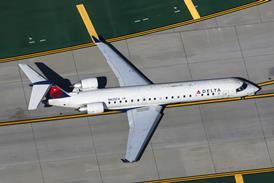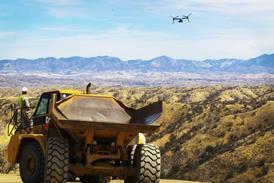GRAHAM WARWICK / WASHINGTON DC
Research, education and corporate incentive programmes among the targets for Los Angeles company's enterprise
A US company plans to offer commercial weightless flights using a modified Boeing 727-200 freighter. Los Angeles-based Zero Gravity (Zero-G) has completed six test flights and obtained supplemental type certification for the aircraft modifications required for parabolic flight, and is negotiating with a cargo carrier to operate the 727 under wet-lease.
Zero-G hopes to begin commercial flights late in the first quarter of next year, says chairman Peter Diamandis. The company has signed a reseller agreement with Space Adventures, which markets weightless flights in Russia's Ilyushin Il-76 cosmonaut training aircraft. Marketing agreements have also been signed with Paris-based Novespace, which operates Europe's zero-g Airbus A300, and US-based Omega World Travel. Target markets include corporate incentive programmes, research, education, entertainment and the general public.
Zero-G says its service will be cheaper and more accessible than the Il-76 flights, which cost $5,500 and require a week-long trip to Russia, while NASA's Boeing KC-135 and Novespace's A300 are not available commercially. The concept is to use 727 overnight freighters that would otherwise be idle during the day and at weekends, with modified aircraft available at several locations around the USA. A typical flight would involve 20 parabolas, each providing about 30s of reduced gravity, says president Byron Lichtenberg: "Five Martian at one-third g, five Lunar at one-sixth g and the rest at zero g."
The US Federal Aviation Administration has told Zero-G it will allow commercial parabolic-flight operations in partnership with a Part 121 airline. Negotiations are under way with two "significant" US cargo carriers, Diamandis says. In conjunction with the selected operator, the company must seek final approval from the carrier's local FAA flight standards office.
Zero-G will pay for the modifications, principally accumulators to maintain hydraulic pressure during parabolic flight, then wet-lease the aircraft and aircrew, installing pallet-mounted seats, mats and experiment racks via the large cargo door.
The aircraft will carry 25 customers and five trainers, Lichtenberg says. Pilots from the carrier will be trained to fly accurate parabolas between 24,000ft (7,300m) and 32,000ft. The manoeuvres involve pulling 45° nose-up, then pushing over to begin the zero-gravity segment and reaching 30° nose-down before initiating a 1.8g pull-out.
Parabolic flights "are a first step towards going into space", says Diamandis.
Source: Flight International























